Oysters, Climate Change, and Pier 94
By Noreen Weeden
Pier 94, our habitat restoration site along San Francisco’s southeastern shoreline, is a potential oyster hotbed!
No, we’re not talking about turning Pier 94 into the next Hog Island Oyster Company. These are a different kind of oysters—tiny native oysters that make better eating for wildlife than for humans, and that could become part of our defense against climate change.
Olympia oysters (Ostrea lurida) are an important part of the cultural and natural history of San Francisco Bay. They provide valuable nutrition for birds such as sea ducks and Black Oystercatchers, as well as rock crabs, bat rays, sea otters, and other marine life.
The smallest oysters in the United States (2.4 to 3.1 inches long and 0.9 to 1.3 inches thick), Olympias are the only oyster species native to the West Coast. They were part of the diet of Native Americans and were harvested by Gold Rush newcomers, although today people prefer larger, commercially-farmed Eastern (Atlantic) and Pacific oysters (native to Asia).

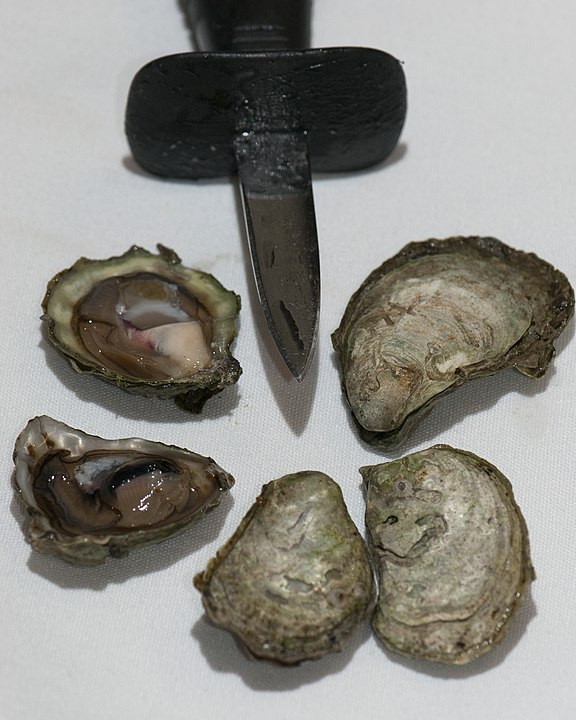
Olympia oysters improve water quality and clarity by filtering over five gallons of water per hour while consuming microscopic plants known as phytoplankton. Despite dramatic population declines in San Francisco Bay due to over-harvesting, mining silt, pollution, and habitat loss, remnant populations of our little native oyster have survived.
A fascinating fact about Olympia oysters is that they are sequential hermaphrodites. They start out as males, develop into females, and switch back again, maybe twice in a year. The larvae float in the water and find a place to attach and grow.
All interesting… but what do Olympia oysters have to do with Pier 94?
A shoreline salt marsh restoration site owned by the Port of San Francisco, Pier 94 has been managed by Golden Gate Bird Alliance since 2002. In a 2016 report on vegetation management there, Dr. Peter Baye suggested that native oysters could provide wetland protection and rocky intertidal habitat enhancement.

In 2017, we partnered with California Academy of Sciences and others on a bio-blitz at Pier 94 where volunteers documented the presence of our native oyster. Later that year, we invited Dr. Chela Zabin of the Smithsonian Environmental Research Center (SERC), Dr. Kathy Boyer of San Francisco State University, and John Takakawa of Audubon California to the site to discuss living shorelines—shorelines made of natural materials (like plants, sand, or oyster beds) rather than concrete sea walls. One of the issues we hoped to address was potential shoreline erosion from sea level rise and increased storm surge due to climate change.
With grant funding from a private family foundation and the National Fish and Wildlife Foundation, we enlisted Dr. Zabin and her colleague Jeffrey Blumenthal. Starting in 2019, the team worked on a project to evaluate Pier 94 as a potential native oyster restoration site.
SERC would investigate whether a living shoreline with oysters would increase shoreline protection and provide habitat for native subtidal and intertidal organisms at this site. This study would investigate
- Current distribution and abundance of adult oysters.
- Oyster recruitment at two tidal elevations.
- Presence of a predator called the Atlantic oyster drill (Urosalpinx cinerea).
- Presence and abundance of a native seaweed (Fucus distichus) that gives some protection to the oysters from heat during low tides, and
- Conditions including air temperature, water temperature and salinity.
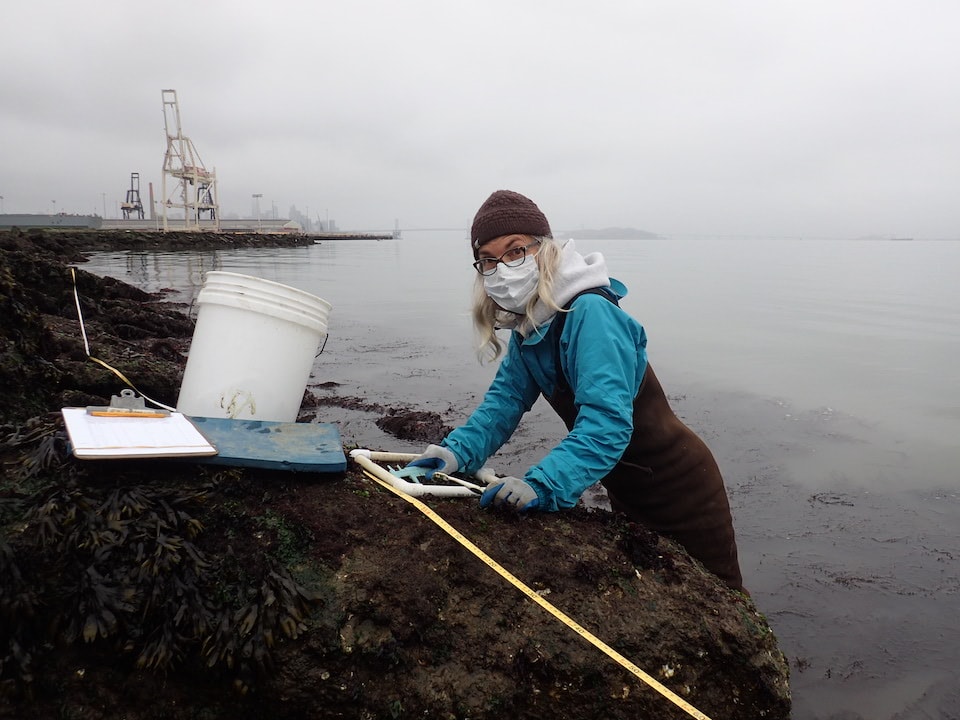
Golden Gate Bird Alliance volunteers took part in the study until the COVID-19 pandemic halted their involvement. The study evaluated oyster density using transects, measurement of the largest oysters, surveys for the presence of the predatory oyster drills, and temperature and salinity measurements.
The SERC team donned wetsuits and entered the Bay at Pier 94’s south and west shores. Underwater, they used rebar to secure frames that were placed in the subtidal area. Each frame had ceramic tiles to which oysters could attach, a process known as oyster recruitment. During examination these tiles were removed and replaced with new tiles, one of which was lost due to high wave action or human interference.
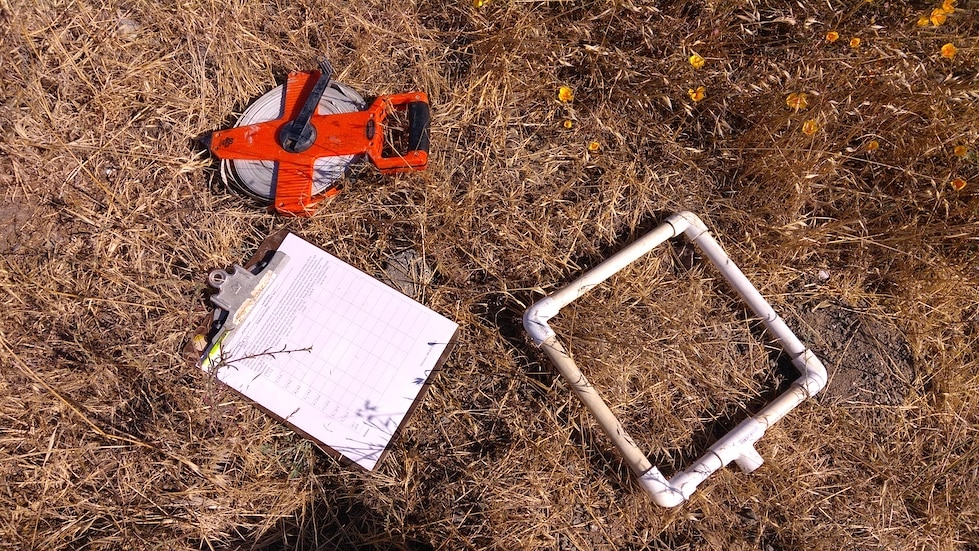
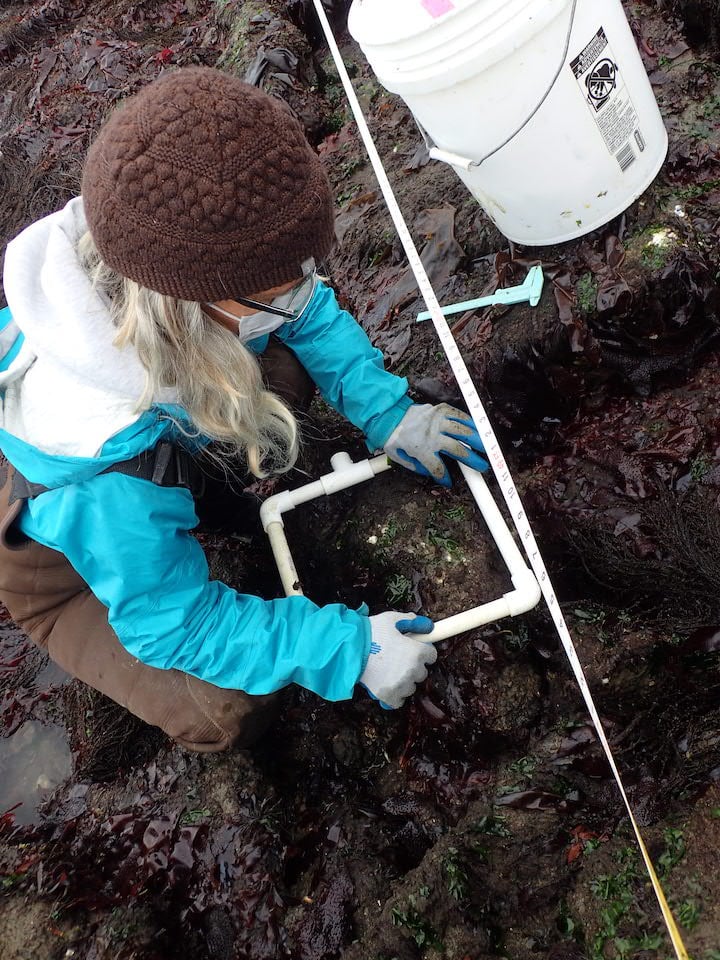

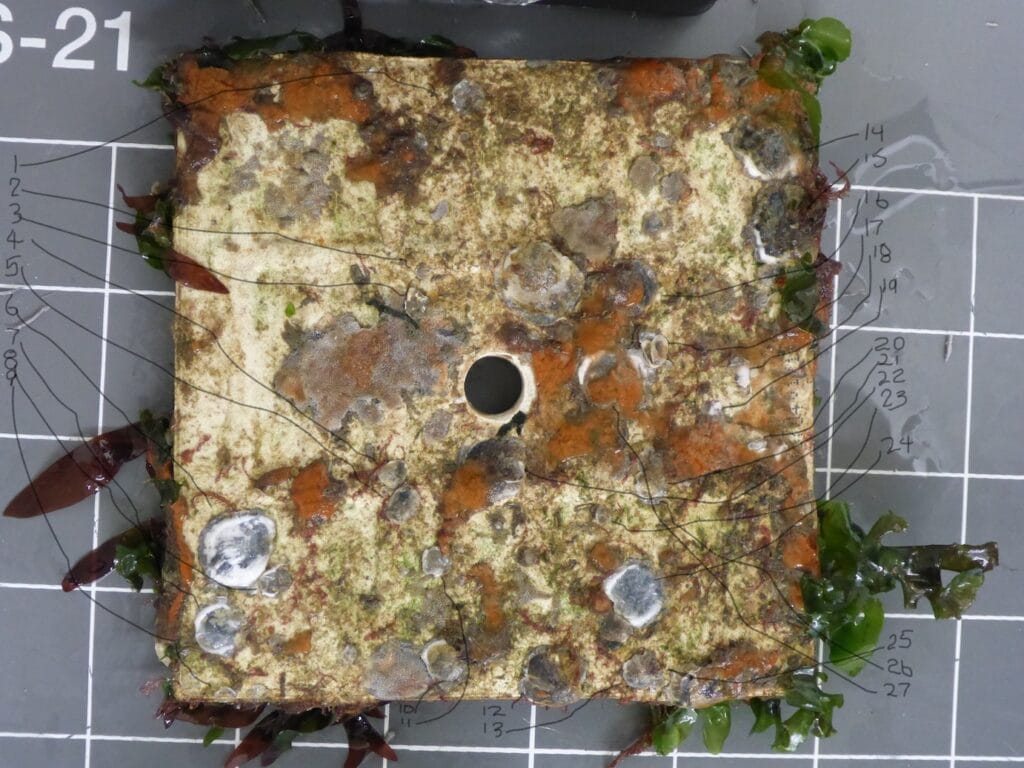

The oysters and other organisms on the tiles were analyzed under microscopes during 2019 and 2020. Except during extreme low tide events, these tiles were not visible from shore until the SERC team placed small buoys labelled “research” upon them to prevent any fishing entanglements or passing kayakers or paddle boarders from getting too close.
Among early findings, the SERC team identified a non-native mud snail called Batillaria attramentaria that doesn’t harm oysters but poses a threat in outcompeting our native mud snail, Cerithidea californica. Attempts to eradicate this species through volunteer hand-removal efforts have not been successful.

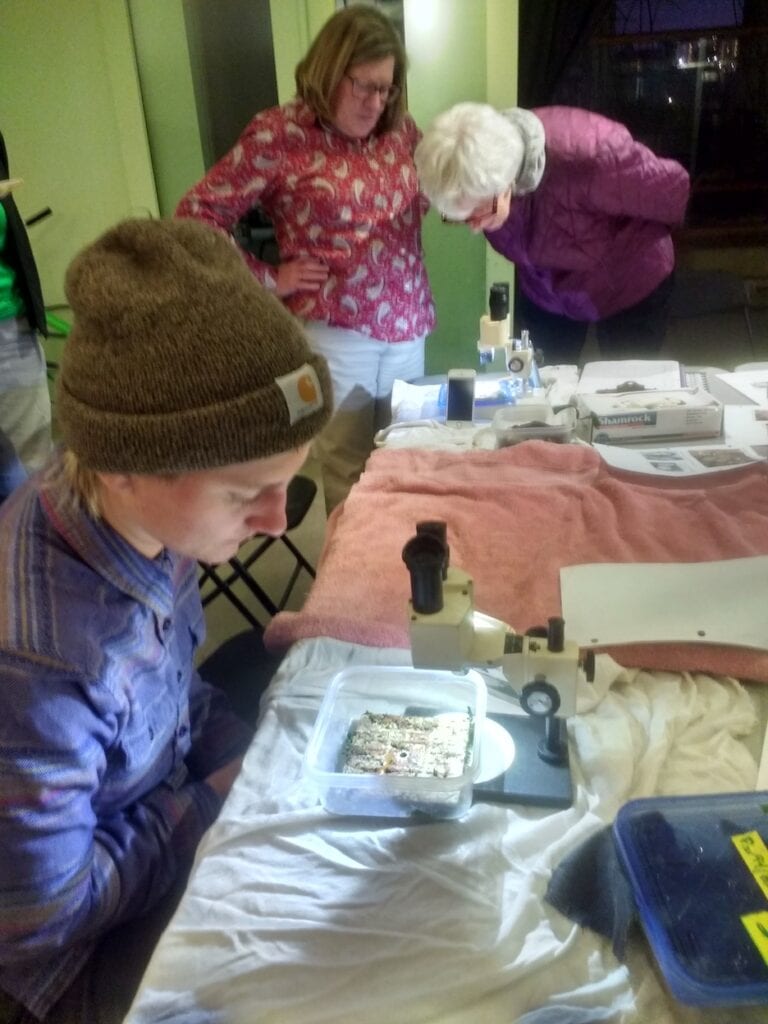
SERC’s final report—delivered earlier this year—found Pier 94 an “excellent site for oyster restoration.” Its high ranking was due to the low risk of extreme low-salinity events, cooler air temperatures than other parts of the Bay, and an absence of the predatory oyster drill. The rate of oyster recruitment was high and the diversity of sizes showed a healthy balance of recently recruited and older surviving oysters.
The evaluation tool used enabled the researchers to use the number of tiles to take a sample size, extrapolate average oysters per meter squared, and enter standard error rate. Overall they found an average of 6,827 oysters per square meter, with a standard error of 740 on 26 tiles. “This resulted in a top score in the Site Evaluation Table: 125 points of 125 potential points,” they wrote.
In sum: Pier 94 scored high in oyster attributes and environmental parameters.
“Based on this report’s findings, (SERC) recommend Pier 94 as a site where oyster restoration efforts that deploy additional hard substrate for oysters to settle on is likely to be successful,” the researchers concluded.
Fostering a living shoreline with native Olympia oyster restoration at Pier 94 would offer multiple benefits:
- Buffering the shoreline from the impacts of climate change.
- Increasing Olympia oysters throughout San Francisco Bay.
- Improving biodiversity, in particular the diversity of intertidal species, and
- Expanded volunteer opportunities, possibly including continued partnership with nearby Heron’s Head Park EcoCenter, which is also considering native oyster reintroduction.
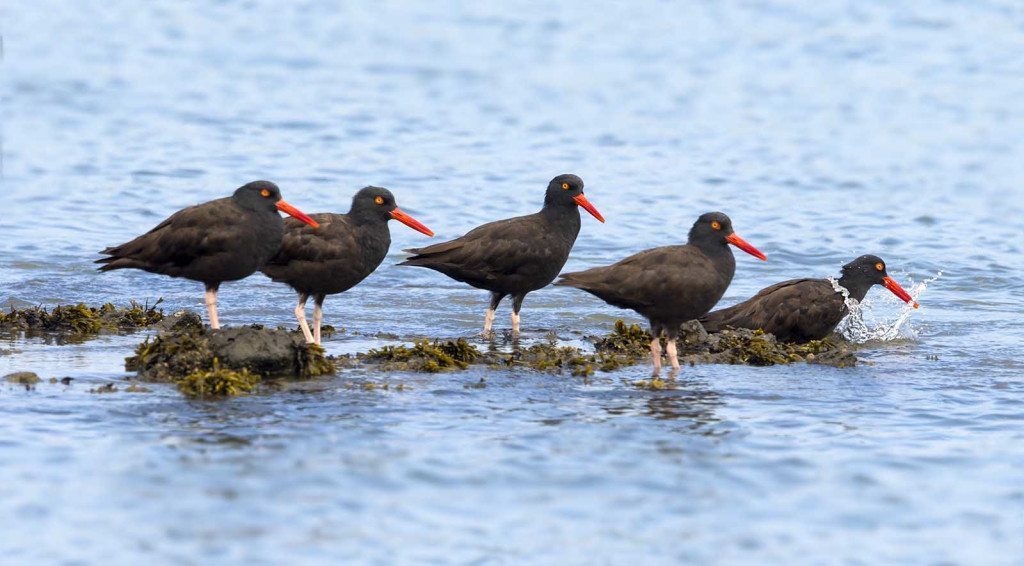
Golden Gate Bird Alliance now aims to secure funding to pursue this living shoreline solution for Pier 94. The funding would cover engineering design and permits, management, and implementation of the shoreline substrate to support native oysters.
Once the substrate is in place, the report predicts that native oysters will come. Staff and volunteers would continue to monitor the oysters and track the presence of the invasive predator drill, as well as salinity, algae, and rock seaweed. Audubon staff would continue to inform volunteers, researchers, and others about the non-native mud snail in order to prevent its spread to other sites.
Pier 94 won’t be the next trendy Hog Island-style oyster bar. But with financial support and the commitment of our volunteers, it could be something even better—a shellfish buffet for Bay wildlife and a test case for climate adaptation.
Noreen Weeden was formerly Golden Gate Bird Alliance’s Volunteer Director. She retired from that role and is currently a part-time project manager for the Pier 94 Native Oyster and Eelgrass Project Team. The team consists of Janet Carpinelli (Golden Gate Bird Alliance’s Volunteer Manager), Golden Gate Bird Alliance volunteers, Smithsonian Environmental Research Center staff and researchers, and Romberg Tiburon Center for Environmental Studies staff and researchers.
